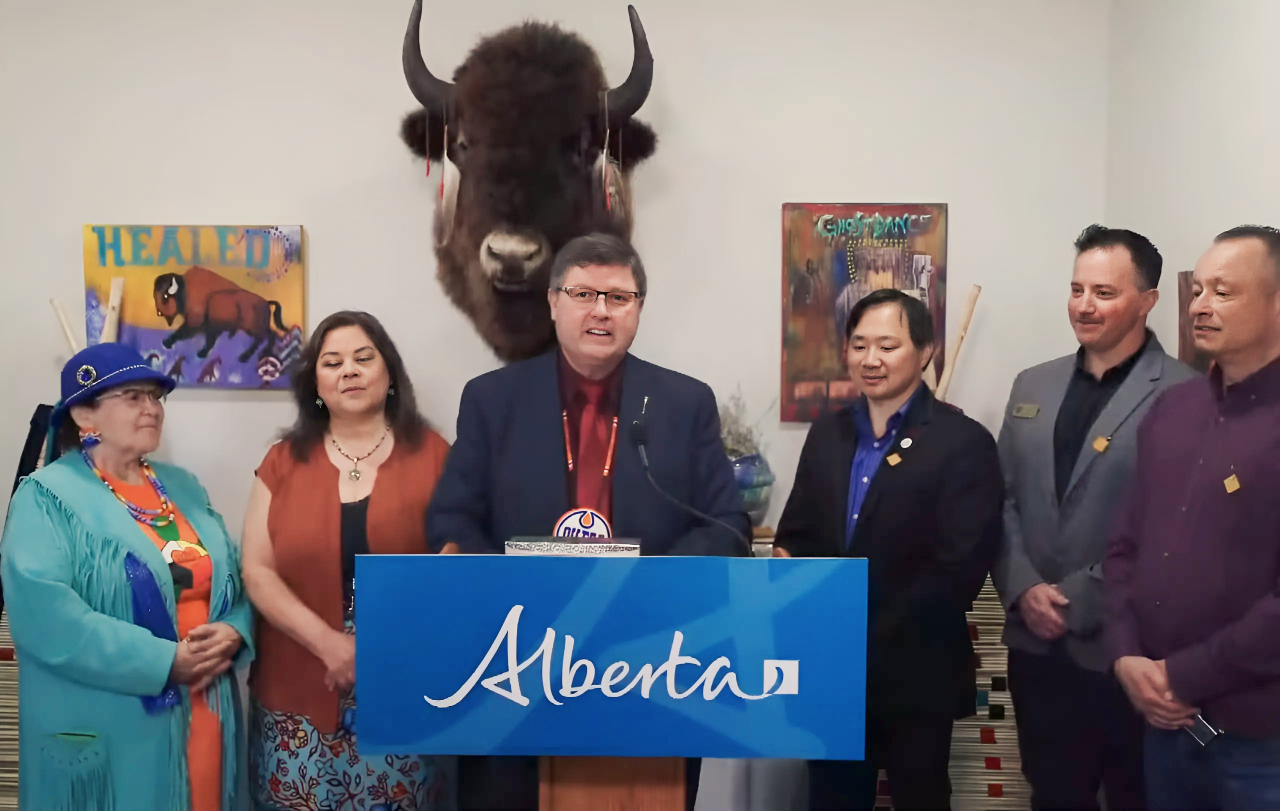Alberta’s Minister of Indigenous Relations, Rick Wilson, announced the recipients of the Community Support Fund grants today and called for new applications for this year. Standing on Treaty 6 territory, acknowledging the Métis people, Minister Wilson highlighted the Alberta government’s commitment to addressing violence and enhancing the safety and economic security of Indigenous women, girls, and Two-Spirit plus (2S+) people.
Highlighting the importance of community-led solutions, Minister Wilson emphasized the grants’ role in fostering resiliency and well-being among Indigenous populations. Since its inception in 2023, the Community Support Fund has supported 25 projects with a total of over $4.4 million in grants. These projects include healing circles, mentorship programs, peer support networks, job skills training, and financial literacy programs. Each initiative is designed to raise awareness and enhance cultural connections, providing crucial support to Indigenous women, girls, and 2S+ people.
“Today, we are opening the application process for more projects,” Wilson announced. “I encourage Indigenous communities, organizations, and partners to visit alberta.ca for more information and to contact my ministry for assistance.” Wilson’s enthusiasm was evident as he spoke about the program’s success, urging potential applicants to apply soon due to the high demand.
Among the celebrated recipients was the Sky Dancer Indigenous Cultural Center, which received funding for its Misatim Journey project. This initiative addresses historical and intergenerational trauma through guided sessions and counseling rooted in Indigenous teachings. Participants engage in creative self-expression and cultural practices, helping them develop personal strategies and skills for their futures.
Minister Wilson also highlighted other notable projects across Alberta. In Lethbridge, local Indigenous organizations are creating safer spaces and online reporting systems for sexual violence. In the north, the Kitascannow Tribal Council Education Authority is establishing a physical and virtual storefront where Indigenous women, girls, and 2S+ people can sell culturally significant items. Cold Lake First Nations is increasing economic security for Indigenous women by creating a drop-in space to enhance their education and employability. The Mountain Rose Women’s Shelter in the Rocky Mountain House area is providing culturally sensitive programming to address violence and improve safety for Indigenous clients.
“Grant recipients are focusing on addressing violence and increasing safety and economic security,” Wilson noted. “Their work is essential in making a difference in every corner of the province.”
The announcement also featured remarks from Diane Mey, President of the Sky Dancer Indigenous Cultural Center. Mey elaborated on the Misatim Journey, a two-year program that incorporates horse therapy and creative arts to help participants reconnect with their culture and heal from trauma. The program has seen tremendous success, with participants overcoming fears and developing new skills.
“Women and men are waking up to their culture and healing,” Mey said. “We’re helping to heal the divide between Indigenous and non-Indigenous people, creating a community where they can meet and grow.”
The press conference concluded with questions from the media, where Wilson encouraged continuous engagement and applications for the fund. He also mentioned the establishment of the Premier’s Panel, born from the Missing and Murdered Indigenous Women and Girls report, which plays a crucial role in shaping the grant program.
Wilson’s emotional appeal underscored the program’s significance: “This is about helping families to heal. Let’s all work together to make it a safer place for Indigenous women and 2S+ people.”
As Alberta continues to support Indigenous-led initiatives, the Community Support Fund stands as a testament to the province’s dedication to fostering a safer and more inclusive environment for Indigenous communities.

